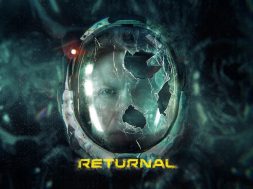
The Fix – Review
Story by: Nick Spencer
Art by: Steve Lieber
Colours by: Ryan Hill
Letters by: Nic J. Shaw
Published by: Image
What if you took buddy cop action and crime caper comedy and threw the two of them together? Mix in one half Lethal Weapon with one half Ocean’s Eleven, seeing the story from both sides. In The Fix, Nick Spencer manages to mix the two perfectly, with one twist: in this story, the cops are the criminals.
Not The Nice Guys…
Crime doesn’t pay. It’s pretty standard shtick for any cop movie from Die Hard to 21 Jump Street. The Fix opens with yet another run down of how crime doesn’t pay… not like it used to anyway. Our narrator sets out right from the beginning that being a criminal is a fool’s game. Improvements in police and legal procedure combined with advancing technology mean that most traditional crime is becoming a thing of the past. Our streets are getting safer, our savings more secure. Yep, this guy really hates crime, or at least, hates how complex it’s become. He just longs for the good old days where you could get things done with a balaclava and a big stick. As it turns out, the main character isn’t one of the good guys, but at least he’s honest about it.
…but so damned likable!
The darkly comedic tone used throughout The Fix hits you right from the offset. Any among you who have read Spencer’s work on The Superior Foes of Spider-Man will recognise the approach. You’ll also be familiar with how damn likeable his characters can be. That’s one of the bigger, if not the biggest, draws to The Fix. The antagonists, Roy and Jake, are extremely well characterised. They’re genuine, they’re funny, they have a fantastic rapport with each other, and with their supporting cast. They just also happen to be abhorrent human beings. Not as bad as that one Josh guy though. That guy’s just sick.
It speaks to Spencer’s skill as a writer that his characters are so endearing. Even when they’re about to shoot someone, even when they’re in the process of robbing an old folk’s home, even when they’re literally reminding us that they’re terrible humans and don’t care if we like them.  These guys are just hard to hate. In fact, if it weren’t for the continual mentions of crime being a bad thing for not-nice people, and the duo’s inability to learn any sort of lesson, The Fix could be seen as glorifying crime.
These guys are just hard to hate. In fact, if it weren’t for the continual mentions of crime being a bad thing for not-nice people, and the duo’s inability to learn any sort of lesson, The Fix could be seen as glorifying crime.
So how does the book get around that? Well, despite Roy and Mac being so clever and fast talking in some ways, they’re also pretty hapless. Not to mention their lack of common sense. Finally, the biggest scheme of all also has one major roadblock. This comes in the form of one of the greatest officers known to the force. One with an impeccable arrest record and unbreakable morals: Special Agent Pretzels the Dog.
Getting Your Fix
 The Fix is told primarily from Roy’s point of view. He serves as the sole narrator, while the scenes occasionally jump between other characters. The focus of each issue is directed mainly at a single sub-plot, while the overall arc is pushed forward between scenes. With all the talk of low brow comedy and a dog as a police officer, it would be pretty easy to think of The Fix as a dumb book, but it’s quite the opposite. As with a lot of good comedy, this is highly intelligent and makes great use of satire. The third issue in particular takes a fantastic look at how society treats its young celebrities and superstars. I’ve talked up Spencer’s writing a lot, but what about the rest of the book?
The Fix is told primarily from Roy’s point of view. He serves as the sole narrator, while the scenes occasionally jump between other characters. The focus of each issue is directed mainly at a single sub-plot, while the overall arc is pushed forward between scenes. With all the talk of low brow comedy and a dog as a police officer, it would be pretty easy to think of The Fix as a dumb book, but it’s quite the opposite. As with a lot of good comedy, this is highly intelligent and makes great use of satire. The third issue in particular takes a fantastic look at how society treats its young celebrities and superstars. I’ve talked up Spencer’s writing a lot, but what about the rest of the book?
As much as the writing was the star for me, the rest of the work is second to none. Lieber‘s art has some parallels to 80s comics. The key parts of the images are well defined, with charcoal style shading and details that give the backgrounds a suitably grimy feel. Ryan Hill’s colour palette is,  likewise, reminiscent of 80s cult classics, not for use of vibrant neon, but more for the burnt out look the setting California sun gives a city. This complements the line work nicely, giving the book the feel of something that’s had just a bit too much coffee. Finally, Shaw has to be commended for his lettering job. There’s a lot going on in terms of dialogue, but he’s managed to set it up so that it’s never distracting and that the important parts of Lieber‘s art is kept in focus.
likewise, reminiscent of 80s cult classics, not for use of vibrant neon, but more for the burnt out look the setting California sun gives a city. This complements the line work nicely, giving the book the feel of something that’s had just a bit too much coffee. Finally, Shaw has to be commended for his lettering job. There’s a lot going on in terms of dialogue, but he’s managed to set it up so that it’s never distracting and that the important parts of Lieber‘s art is kept in focus.
So what’s the catch?
Nothing is perfect. So too does The Fix have its drawbacks. Each issue is jam packed with characterisation and sucks the marrow out of it’s own plot line, but as a result of this, the overarching story can take a backseat. I was a little disappointed when I got to the end of the first arc and realised the plot hadn’t really gone anywhere. Well, no, that’s not entirely accurate. I’d be better off saying that end of the first arc feels like the story is just taking off, without having really gone anywhere. Technically that’s exactly what a good opening arc should do to keep you hooked. However, for The Fix it felt like it was taking off in a ‘first issue’ way, rather than a ‘first arc’ kind of way.
Secondly, all that dialogue, all those jokes and all the narration can get in the way. This is a text heavy book and, while all of that text is a joy to read, some panels can feel cramped. This wasn’t something that I felt was a problem as such, but I did feel it was worth mentioning. Particularly for those of you who enjoy their graphic novels for the ‘graphic’ part, rather than the ‘novel’ part.
The Defense Rests
Should you pick up The Fix? I would almost certainly say ‘Yes’ around the board. There are plenty of crime and noir comics on the market, but buddy cop series are thin on the ground. It’s also quite rare to find a book with such great comedic quality. Most comics will have jokes dispersed through them, but The Fix has a non-stop slew of punchlines. Between the witty dialogue and bizarre plot art, this will keep you laughing without ever getting tired. If you have an equal appreciation for satire, one-liners and physical comedy, you’ll be very happy here. Any fans of Bojack Horseman, Rick & Morty, Lethal Weapon or Baccano! would also be well suited to check it out.













